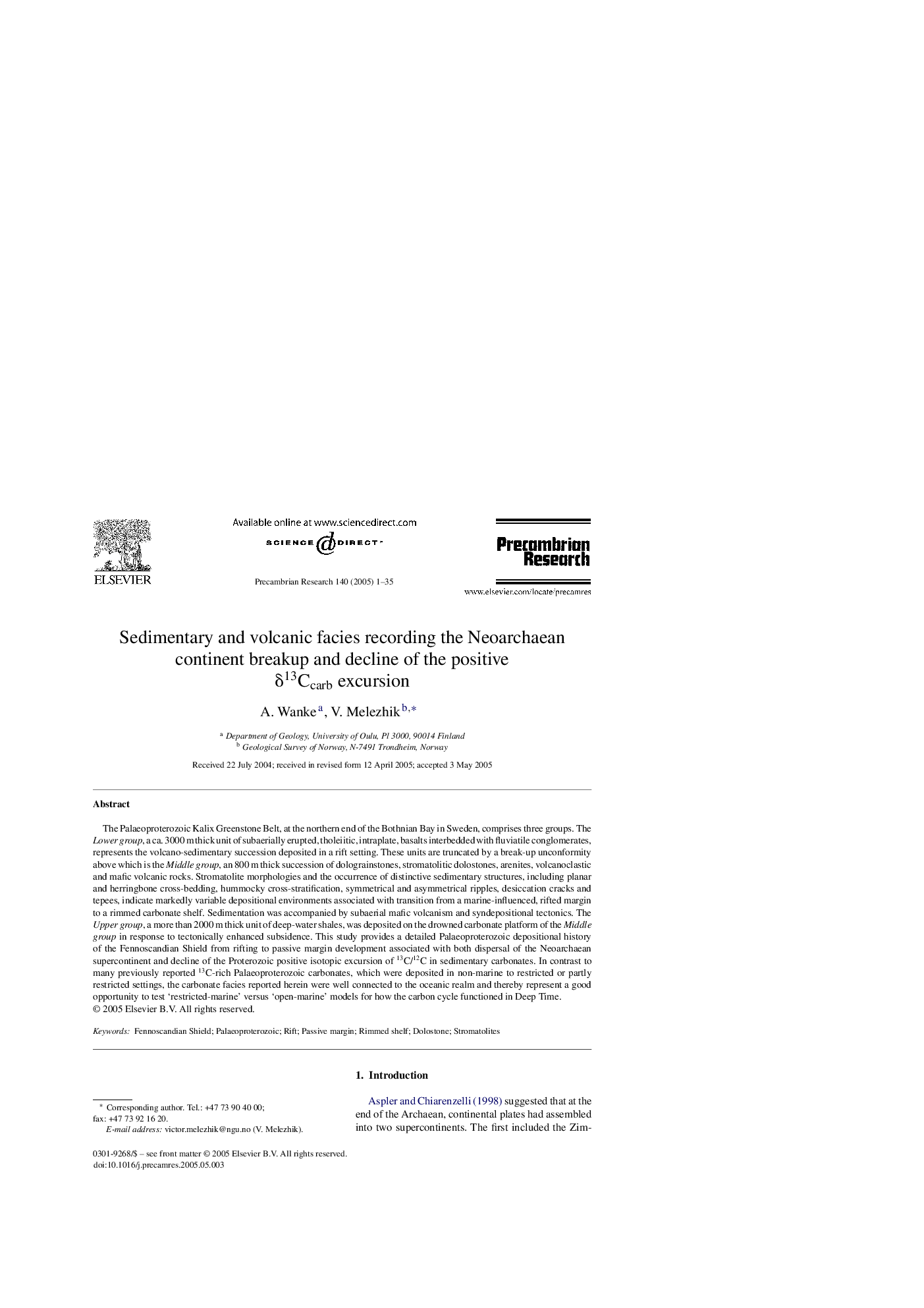| کد مقاله | کد نشریه | سال انتشار | مقاله انگلیسی | نسخه تمام متن |
|---|---|---|---|---|
| 9533545 | 1639748 | 2005 | 35 صفحه PDF | دانلود رایگان |
عنوان انگلیسی مقاله ISI
Sedimentary and volcanic facies recording the Neoarchaean continent breakup and decline of the positive δ13Ccarb excursion
دانلود مقاله + سفارش ترجمه
دانلود مقاله ISI انگلیسی
رایگان برای ایرانیان
کلمات کلیدی
موضوعات مرتبط
مهندسی و علوم پایه
علوم زمین و سیارات
ژئوشیمی و پترولوژی
پیش نمایش صفحه اول مقاله

چکیده انگلیسی
The Palaeoproterozoic Kalix Greenstone Belt, at the northern end of the Bothnian Bay in Sweden, comprises three groups. The Lower group, a ca. 3000Â m thick unit of subaerially erupted, tholeiitic, intraplate, basalts interbedded with fluviatile conglomerates, represents the volcano-sedimentary succession deposited in a rift setting. These units are truncated by a break-up unconformity above which is the Middle group, an 800Â m thick succession of dolograinstones, stromatolitic dolostones, arenites, volcanoclastic and mafic volcanic rocks. Stromatolite morphologies and the occurrence of distinctive sedimentary structures, including planar and herringbone cross-bedding, hummocky cross-stratification, symmetrical and asymmetrical ripples, desiccation cracks and tepees, indicate markedly variable depositional environments associated with transition from a marine-influenced, rifted margin to a rimmed carbonate shelf. Sedimentation was accompanied by subaerial mafic volcanism and syndepositional tectonics. The Upper group, a more than 2000Â m thick unit of deep-water shales, was deposited on the drowned carbonate platform of the Middle group in response to tectonically enhanced subsidence. This study provides a detailed Palaeoproterozoic depositional history of the Fennoscandian Shield from rifting to passive margin development associated with both dispersal of the Neoarchaean supercontinent and decline of the Proterozoic positive isotopic excursion of 13C/12C in sedimentary carbonates. In contrast to many previously reported 13C-rich Palaeoproterozoic carbonates, which were deposited in non-marine to restricted or partly restricted settings, the carbonate facies reported herein were well connected to the oceanic realm and thereby represent a good opportunity to test 'restricted-marine' versus 'open-marine' models for how the carbon cycle functioned in Deep Time.
ناشر
Database: Elsevier - ScienceDirect (ساینس دایرکت)
Journal: Precambrian Research - Volume 140, Issues 1â2, 21 October 2005, Pages 1-35
Journal: Precambrian Research - Volume 140, Issues 1â2, 21 October 2005, Pages 1-35
نویسندگان
A. Wanke, V. Melezhik,